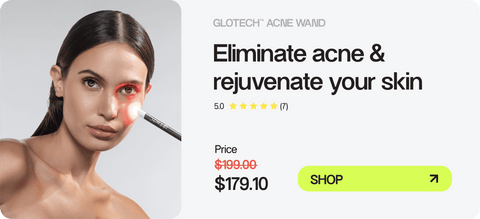
LED therapy for skincare has received a lot of attention recently. What is hype and what is real? First, let's cover the basics.
What is LED light therapy?
- LED (light emitting diode) therapy is a skincare treatment that uses varying wavelengths of light, including red and blue.
- NASA originally developed it for plant growth experiments on shuttle missions and later found it to have promise for wound treatment.
- LED therapy is now used by aestheticians to help regenerate the skin from aging. It’s also used for acne.
There are dozens of independent clinical studies that support the wide range of benefits from LED light therapy.
But is it safe?
- Unlike other types of light therapy, LEDs do not contain ultraviolet rays. Therefore, they’re safe for regular use.
- LED light therapy doesn’t cause burns compared to other anti-aging treatments such as chemical peels, dermabrasion, and laser therapy. It may be safe for all skin colors and types.
LED therapy is growing in popularity in both aesthetician offices and at home. Using varying LED wavelengths, this skincare technique helps:
- treat acne
- reduce inflammation
- promote anti-aging effects
You may be a candidate for LED light therapy if you have these types of skincare concerns and haven’t gotten the results you want from over-the-counter (OTC) skin products. LED therapy is also safe for all skin colors, and it doesn’t cause any burning.
Talk to your dermatologist about your skincare concerns and whether LED light therapy is a good option for you.
How does LED light therapy work?
LED light therapy has an established history of skin uses. The U.S. Navy SEALs began using it in the 1990s to help heal wounds quickly and to help regenerate damaged muscle tissues.
Since then, the treatment has been researched for different situations in aesthetics. It’s mainly noted for increasing collagen and tissues. All of which can smooth out your skin and reduce the appearance of damage from:
- age spots
- acne
- wrinkles
There are different frequencies, or wavelengths, used with LED light treatment. These include red and blue light frequencies, which don’t contain ultraviolet rays and are readily absorbed into the skin.
Red light
Red, or infrared, light is used for treating the epidermis, which is the outer layer of skin. When the light is applied to your skin, the epidermis absorbs it and then stimulates collagen proteins.
In theory, more collagen means that your skin will look smoother and fuller, which can reduce the appearance of fine lines and wrinkles. Red LED light is also thought to reduce inflammation while improving circulation, which can give you a healthier glow.
Blue light
Blue LED light therapy, on the other hand, targets the sebaceous glands, which are also called oil glands. They’re located beneath your hair follicles.
Sebaceous glands are necessary for lubricating your skin and hair so that it doesn’t dry out. However, these glands can become overactive, leading to oily skin and acne.
The theory is that blue LED light therapy can target these oil glands and make them less active. In turn, you may see fewer acne breakouts. Blue light can also kill acne-causing bacteria beneath the skin, which can help treat severe acne pimples, including cysts and nodules.
Oftentimes, blue LED light is used in conjunction with red LED light to:
- help treat acne
- decrease scarring
- promote anti-inflammatory effects
One 2018 animal study found that blue LED improved healing of third-degree skin burns.
Explore LED Devices




































































































